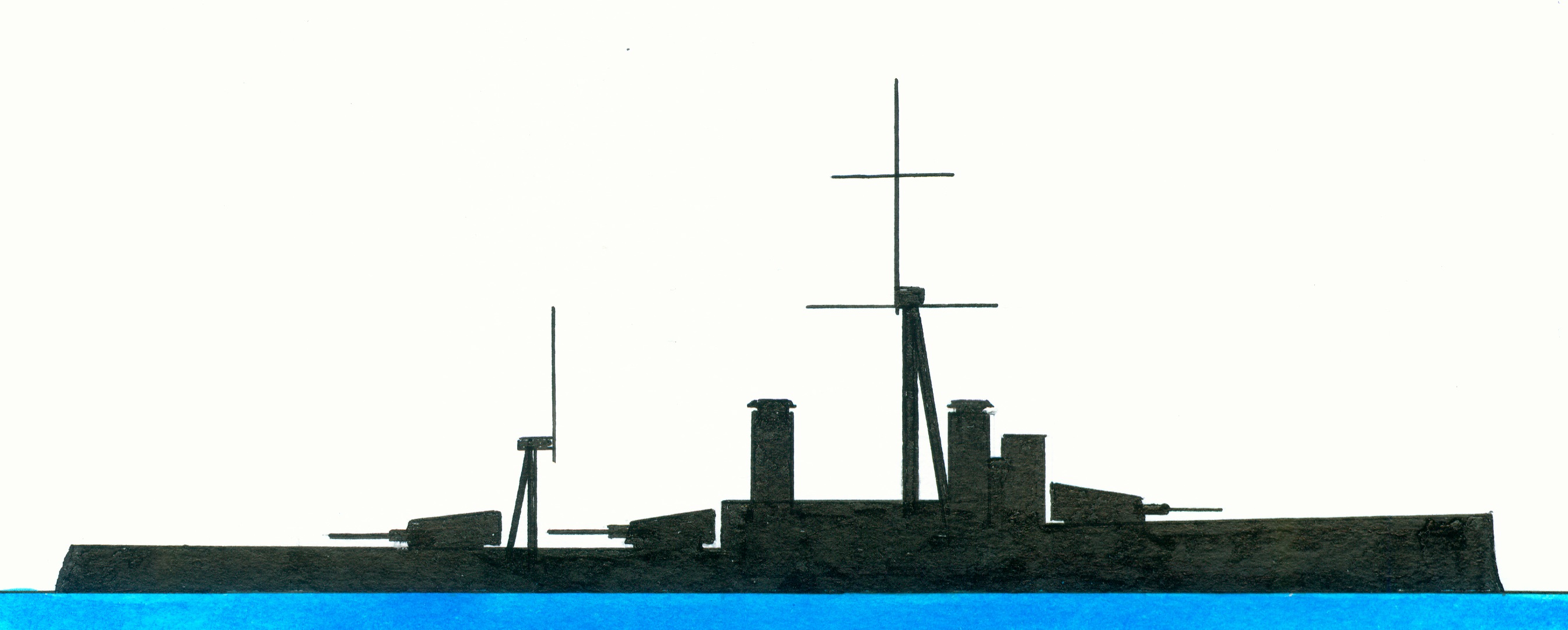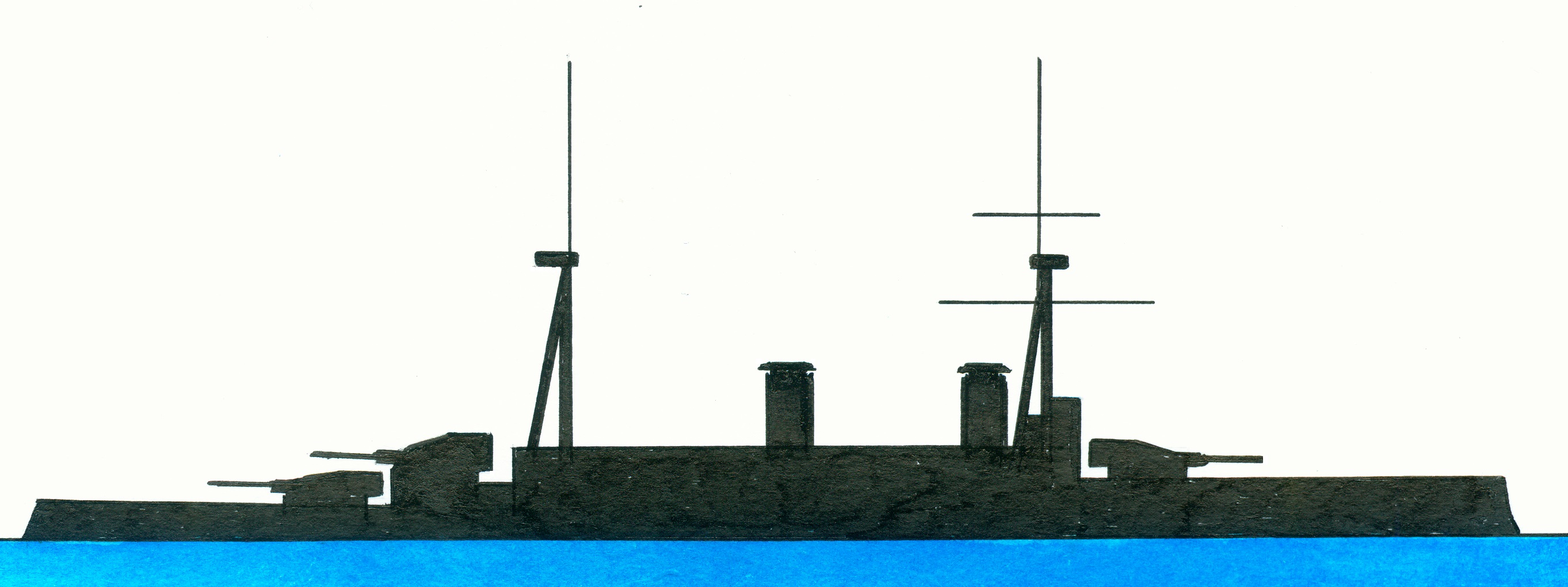Bellerophon-class
St. Vincent-class
HMS Neptune
Displacement 20.000 (normal)-23.200 (deep load) tons and as dimensions 163,4 (over all) x 25,7 x 8,5 metres or 536 x 84.2 x 28 feet. Two Parsons direct drive steam turbine sets and 18 boilers supplied via 4 shafts 24.500 (design)-28l218 (trials) shp allowing a speed of 21 (design)-21,67 (trials) knots and with a speed of 10 knots a range of 6.900 nautical miles respectively 4.250 nautical miles with 18,7 knots. Coal bunker capacity 900 (normal)-2.700 (maximum) tons and fuel oil bunker capacity of 850 tons, Fuel oil was spread over the coal to increase burning rate. Crew numbered 756-8358 men. Armament consisted of 5x2-30,5cm/12” breech loading /50 Mk XI guns, 14/20x1-10,2cm/4” quick firing /50 Mk VII guns, 1-12pd/7,6cm/3” anti aircraft gun, 4-3-d salute guns and 3-18” torpedo tubes. After the Battle of Jutland fitted out with a kite balloon. Armour consisted of 1 20,3-25,4cm/8-10” thick Krupp cemented belt, 1,9-7,6cm/0.75-3” thick deck, 12,7-20,3cm/5-8” thick bulkheads with the turrets, barbettes and conning tower protected by respectively 27,9cm/11”, 12,7-25,4cm/5-10” and 20,3-27,9cm/8-11” thick armour.



